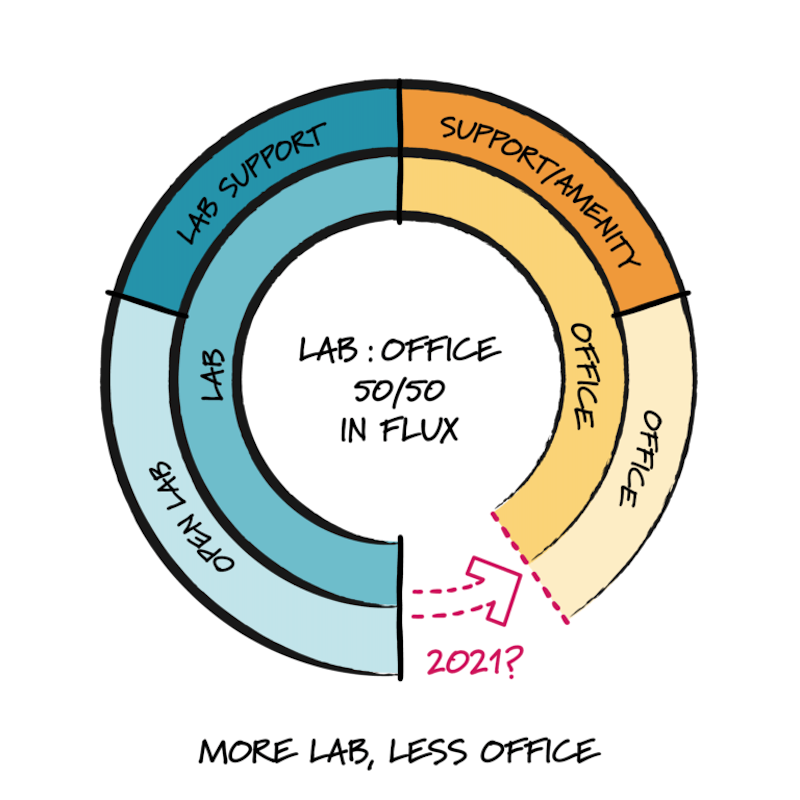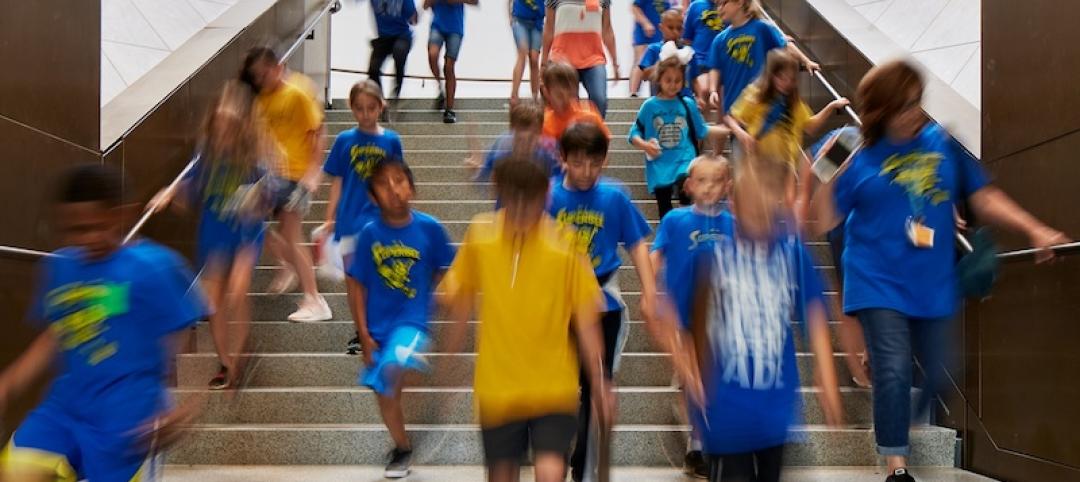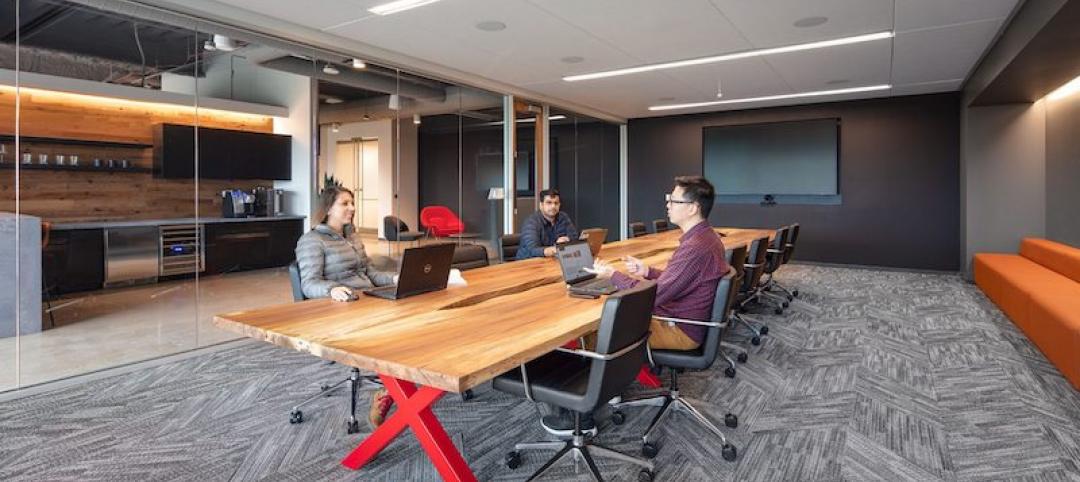COVID-19 initially brought major disruptions to lab operations and staffing. Those disruptions are now often mitigated through split staffing shifts and increased distancing protocols in lab space. Occupancy of research workstations and office areas has not yet recovered, however, and reflects the difficulties across industries in bringing staff back safely to the office. Office users in life sciences organizations will eventually reclaim a desk – full time or part time – but space planning for those users will begin to see a change.
The 50/50 standard for lab-to-office is commonly used by many organizations to plan new space. There are two converging trends that will shape this ratio of lab-to-office in 2021.
The first trend is evident in the work-from-home status that may not disappear when the pandemic is under control. While work in the lab will return to pre-pandemic rhythms, the need for office areas will be reduced: much of the heads-down and computational work previously done in the office may not return. Workstations may shrink in size and number. Amenity spaces, meeting areas, and huddle rooms will maintain or grow to facilitate collaboration, but the overall ratio of lab space to office space will turn toward lab.
The second trend is longer term, with environmental health and safety considerations shifting write-up desks and other lab-adjacent desk functions into workplace areas. As lab personnel spend much of their day at the bench, organizations are examining models for hot-desking and hoteling of workstations. These models offer both an efficient use of space, and an antidote to an empty-workstation culture – desks are occupied and activity is maintained. As importantly, co-locating lab personnel, computational scientists, and other researchers promotes collaboration. To leverage design in this effort, program areas for laboratory, lab support, office, and amenities are not seen as individual elements, but rather as related components that can be interconnected visually and experientially. One of the most important lab trends to watch for in 2021: the holistic approach to lab and workplace that brings researchers together in the pursuit of the next generation of therapies and advances in life science.
COVID-19 is amplifying existing research trends inside and outside the lab. Genome sequencing and polymerase chain reaction (PCR) lab processes are two such growth areas that are now gaining even more momentum. Will we need to unwind some of this capacity post-Covid? And will organizations eventually seek to re-establish aspects of the pre-pandemic office culture? Holistic planning techniques for flexible lab/workplace design will be critical in pivoting to new research targets and future organizational cultures.
More from Author
HGA Insights Blog | Feb 8, 2021
Prioritizing staff wellbeing: A call to action
Recent studies reveal that more than 50 percent of physicians and one-third of nurses experience burnout, HGA researchers have the details—and the evidence-based design interventions.
HGA Insights Blog | Oct 22, 2020
Envisioning libraries as community hubs
In the following, HGA Vice President and Senior Designer Jane Dedering discusses her passion for libraries, community engagement, and how the current pandemic will influence libraries moving forward.
HGA Insights Blog | Aug 6, 2020
Museums emerging from the pandemic: Hands-on learning
HGA Arts & Culture experts weigh in on the future of museums in this ongoing series, Museums Emerging from the Pandemic.
HGA Insights Blog | Jun 17, 2020
Guiding changes in the workplace: Past, present, and future
Since the COVID-19 pandemic, many companies are managing sudden change as they assess the impact on workplace design and how people use spaces.
HGA Insights Blog | Mar 19, 2020
Technology crucial during COVID-19 social distancing
Technology can help bridge the gap during the Coronavirus pandemic as higher education institutes and corporations are moving to a remote work model.
HGA Insights Blog | Mar 9, 2020
Designing campus buildings through an equity lens
As colleges become more diverse, campus conversation is focusing on how to create equitable environments that welcome all voices.












